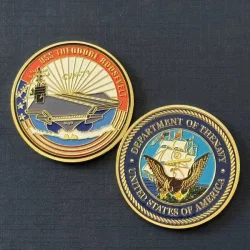Types of Collectibles
2024-07-08
Collectibles encompass a wide range of items that individuals gather and accumulate due to their perceived value, rarity, historical significance, or personal interest. Collecting can be a hobby, a passion, or even an investment strategy. Here's an overview of common types of collectibles and considerations for collectors:
Types of Collectibles
1. Antiques:
- Items over 100 years old, such as furniture, ceramics, glassware, jewelry, and artwork.
- Valued for their historical significance, craftsmanship, and rarity.
2. Coins and Currency:
- Numismatics involves collecting coins and banknotes, often based on factors like age, mint marks, errors, or historical significance.
- Bullion coins are also collected for their precious metal content.
3. Stamps (Philately):
- Collecting postage stamps and related items such as covers, postmarks, and postal history.
- Categories include thematic collections (e.g., animals, space) and historical periods.
4. Art and Memorabilia:
- Includes paintings, sculptures, prints, posters, autographs, and artifacts related to historical figures, events, or popular culture.
- Sports memorabilia, movie posters, and celebrity autographs are popular categories.
5. Toys and Action Figures:
- Collecting vintage and limited-edition toys, dolls, action figures, model trains, and cars.
- Often driven by nostalgia or tied to popular franchises (e.g., Star Wars, Barbie).
6. Comic Books:
- Collecting comic books based on characters, series, or specific issues.
- Graded comics in mint condition can command high values among collectors.
7. Books and Manuscripts:
- Collecting rare books, first editions, manuscripts, and historical documents.
- Includes literary classics, scientific works, and autographed editions.
8. Jewelry and Watches:
- Collecting vintage or designer jewelry, watches, and timepieces.
- Valued for craftsmanship, brand heritage, and unique designs.
9. Sports Cards and Memorabilia:
- Collecting trading cards of athletes, sports memorabilia (e.g., jerseys, equipment), and Olympic collectibles.
- Baseball, basketball, and football cards are particularly popular among collectors.
Considerations for Collectors
1. Authenticity and Condition:
- Verify the authenticity and condition of collectibles, especially valuable or rare items.
- Consider professional grading and authentication services for higher-value items.
2. Market Trends and Values:
- Stay informed about market trends, prices, and demand fluctuations in the collectibles market.
- Join collector communities, attend auctions, and follow reputable sources for insights.
3. Storage and Preservation:
- Store collectibles in appropriate conditions to prevent damage from light, humidity, temperature fluctuations, and pests.
- Use archival-quality materials for storing paper-based items like comics, stamps, and documents.
4. Insurance and Protection:
- Consider insuring valuable collections against loss, theft, or damage.
- Maintain detailed records, including photographs and appraisals, for insurance purposes.
5. Passion and Knowledge:
- Collect items that align with your interests and passions.
- Research the history, production techniques, and significance of collectibles to deepen your appreciation and understanding.
6. Diversification and Focus:
- Explore different categories and niches within your interests to build a diverse collection.
- Decide whether to focus on specific themes, periods, or types of collectibles for a cohesive collection.
Collecting can be a rewarding pursuit that connects individuals to history, culture, and personal memories. Whether collecting for enjoyment, investment, or both, understanding the types of collectibles and considerations outlined above can enhance your collecting experience and help you build a meaningful and valuable collection over time.



